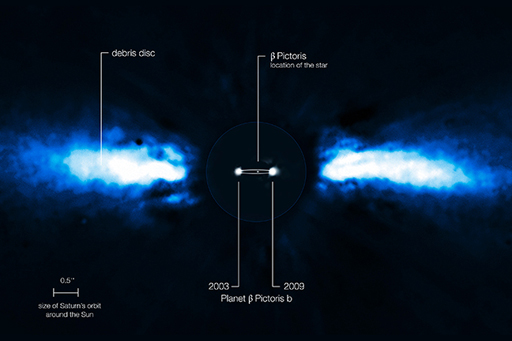4.3.6 Protoplanetary disc example
A complementary method to searching for planets around stars is to search for protoplanetary discs, the dusty discs you learned about earlier, that exist prior to aggregation into discrete planets.
The advantage of this technique over planet observation is that discs can readily be imaged by detection of emission of infrared radiation over and above that expected from a star. The excess radiation results from the presence of dust grains in the disc.
The Infrared Astronomical Satellite (IRAS) made the first observation of an infrared excess around the star Beta Pictoris. Subsequent optical imaging detected a flat disc of dust extending away from the central star – as you can see in the image above.
The disc is ~900 AU across (for comparison, the distance from the Sun to Pluto is ~39.5 AU) but the dust does not extend all the way inwards to the star itself. Images obtained by the Hubble Space Telescope have shown that the central inner zone (a region ~50 AU across) is relatively free from dust, implying that the dust has perhaps been swept up into a planetary system.
In the next section, you’ll be invited to consider whether you think there could be life on an exoplanet.

